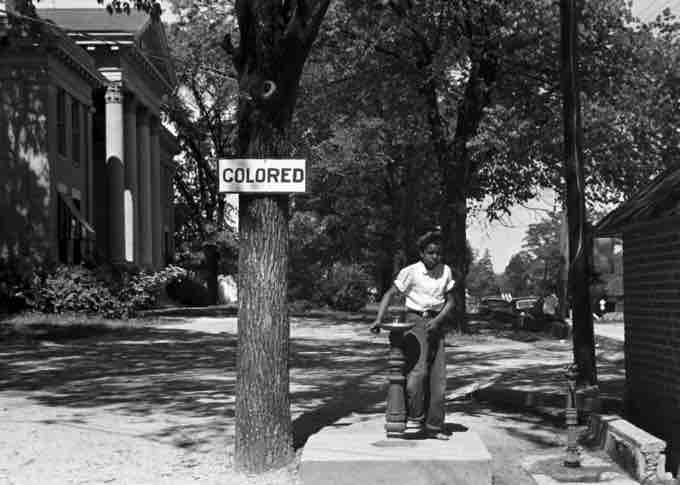Discrimination is the prejudicial treatment of an individual based on his/her membership (or perceived membership) in a certain group or category, and involves actual actions taken towards that individual. A common example of discrimination is the exclusion or restriction of members of one group from opportunities that are available to another group, such as access to public facilities like bathrooms and water fountains.
Controversial attempts have been made to redress negative effects of discrimination. One example is the implementation of racial quotas, that is, establishing numerical requirements for hiring, promoting, admitting and/or graduating members of a particular racial group. These attempts in turn, however, have sometimes been called reverse discrimination (see below).
Racial and Ethnic Discrimination
Racial discrimination results in unequal treatment between individuals on the basis of real and perceived racial differences. It may manifest on every level of social life, from minor disregard or intense hostility in interpersonal interactions to much larger instantiations in public institutions (also called structural or institutional discrimination), such as the segregatory practices prominent in the Jim Crow era of the Unites States (1870s-1960s).
Sex, Gender and Gender Identity Discrimination
Though what constitutes sex discrimination varies between countries, it essentially refers to an adverse action taken against a person based on their perceived sex, gender, and/or gender identity. Historically, sexual differences have been used to justify different social roles for men and women. Unfair discrimination usually follows the gender stereotypes held by a society.
Religious Discrimination
Religious discrimination is prejudicial treatment of a person or group differently based on their spiritual or religious beliefs (or lack thereof).
In a 1979 consultation on the issue, the United States commission on civil rights defined religious discrimination in relation to the civil rights guaranteed by the Fourteenth Amendment to the United States Constitution, which deals with due process and equal fairness of all citizens under the law. According to the commission, religious discrimination occurs when someone is denied " the equal protection of the laws, equality of status under the law, equal treatment in the administration of justice, and equality of opportunity and access to employment, education, housing, public services and facilities, and public accommodation because of their exercise of their right to religious freedom. "
Reverse Discrimination
Reverse discrimination is a term referring to discrimination against members of a dominant or majority group, including the city or state, or in favor of members of a minority or historically disadvantaged group. Groups may be defined in terms of race, gender, ethnicity, or other factors. This discrimination may seek to redress social inequalities where minority groups have been denied access to the same privileges of the majority group. In such cases it is intended to remove discrimination that minority groups may already face.
Reverse discrimination may also be used to highlight the discrimination inherent in affirmative action programs.
Legislation in some nations, such as the UK, assert that identical treatment may sometimes act to preserve inequality rather than eliminate it, and therefore this so-called reverse discrimination is justified.

An Example of Discrimination
An African-American child at a segregated drinking fountain on a courthouse lawn, North Carolina, 1938